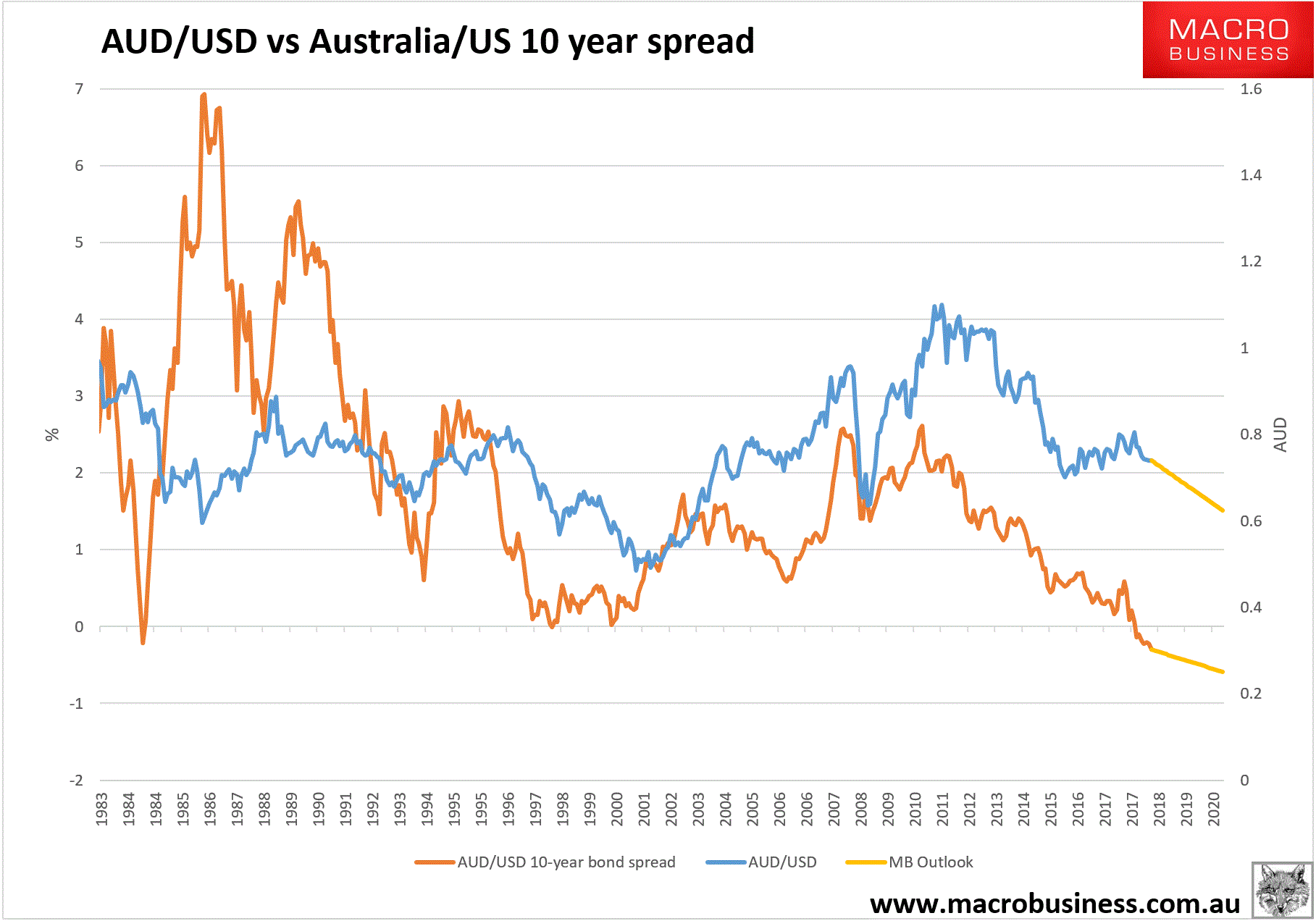Via Bloomie:
While the Aussie is already the worst-performing major currency this year after Sweden’s krona, here are three reasons why it may still be one of the juiciest shorts in foreign-exchange markets.
1. Casualty of War. Morgan Stanley recommends shorting the Aussie versus the U.S. dollar and yen on “rising protectionist risks.” The top forecaster for Australia’s dollar, Marcus Wong at CIMB Bank Bhd in Singapore, said escalating global trade tensions mean the worst for the Aussie is yet to come.
2. Iron Shackles. Although iron-ore prices have climbed about 6 percent from this year’s low to trade around $66 a metric ton, they are only only half the level seen in early 2014. The Department of Industry, Innovation and Science last month slashed its forecasts for the commodity, predicting it will drop to $51.10 next year as China starts to dial back purchases.
3. Diverging Rates. The Reserve Bank of Australia is forecast on Tuesday to keep its cash rate target at a record low 1.5 percent, where it’s been for about two years, as it endeavors to breathe life into the nation’s sluggish economy. The Federal Reserve in contrast has raised its benchmark seven times since December 2015 and said last week it remains committed to further tightening.
Another piece here from QIC:
Let’s unpack this a bit:
- a slowing China means less demand for all commodities including Australia’s key bulks, iron ore and coking coal. That said, as H&H has already noted, the Chinese domestic outlook has lifted a little as it turns to stimulus to offset external drags. So lower commodity prices will come only slowly;
- added to a sluggish Australian economy, which includes house prices sliding at a good clip owing to the credit crunch, that means no rate hikes at all this cycle and, eventually, rate cuts;
- the US economy is booming and the Federal Reserve is tightening with more to come, perhaps another 100bps over the next year, meaning that the interest rate ‘spread’ is set to yawn from already wide levels;
- the trade war intensifies all of these forces.
- we are already approaching the longest US business cycle on record with a flattening yield curve indicating a shock can be expected before too long.
The 10-year yield spread between Australia and the US has never been this wide with the Australian dollar this high. That disconnect is because of China’s 2016/17 stimulus which has boosted commodity prices and the terms of trade. But as that fades and the spread widens even more the trend ought to revert:

Thus a reversion to mean of the rock solid relationship between 10-year yield spread trend and the Australian dollar trend is strong bet. We see the AUD at 72 cents by year end and into the 60s next year.
When eventually the end-of-cycle shock appears then we’ll see deeper lows, perhaps historically so.
The MB Fund is long international equities that will benefit from a lower AUD so this post is talking its book. That said, if you like the ideas expressed and are interested in taking advantage of them then contact us below.
The information on this blog contains general information and does not take into account your personal objectives, financial situation or needs. Past performance is not an indication of future performance. Damien Klassen is an authorised representative of Nucleus Wealth Management, a Corporate Authorised Representative of Integrity Private Wealth Pty Ltd, AFSL 436298.

